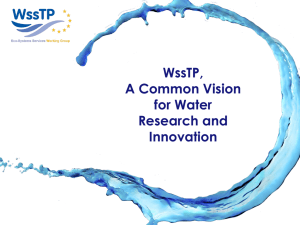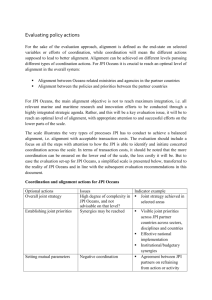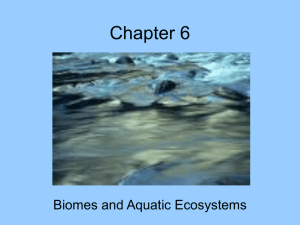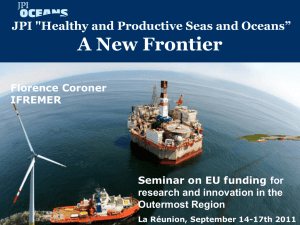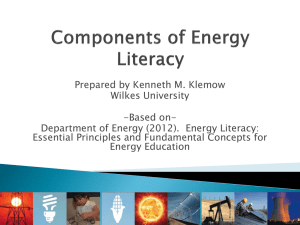Status of 4 May 2010
advertisement
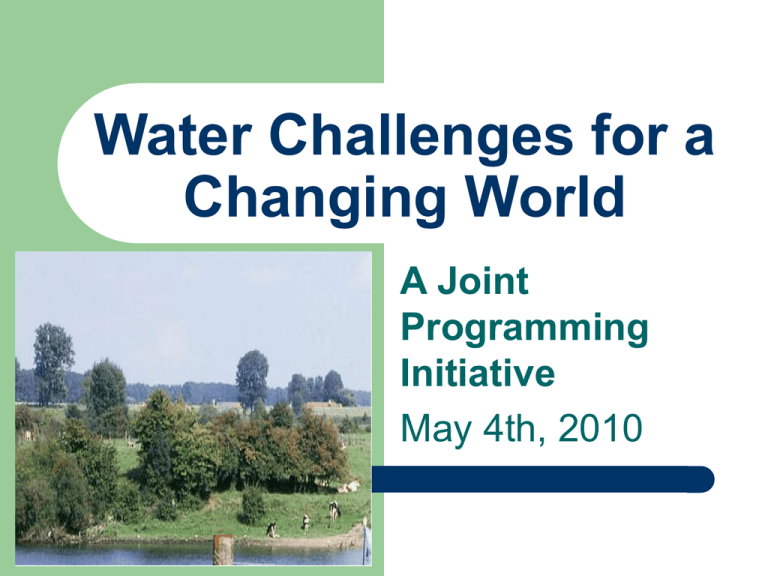
Water Challenges for a Changing World A Joint Programming Initiative May 4th, 2010 A challenging statement… “Under an average economic growth and an actual efficiency improvement of 1% a year, the world wide water demand and supply gap will be approximately 40% by 2030” Charting Our Water Future (2009) The 2030 Water Resource Group 1 Themes for the Joint Programming Initiative European strategic themes leading to breakthroughs in water science and technology Water quantity and quality: A problem with European dimension Water quantity and quality Overexploitation: unbalances in water demand and availability Water quantity issues – – – – European cities concentrate water use and sanitation Groundwater depletion in coastal areas: salinization Intensification of agriculture: increased irrigation water The price of water can contribute to water exhaustion Water quality issues: – – – Fertilizers in agriculture + mobilization of soil and water salts: raising nutrient levels in surface and groundwater Emerging pollutants (hormones, pharmaceuticals, cosmetics and nanoparticles) Release of geogenic elements triggered by human activities Extreme events: part of European history (View of Zaragoza in 1647, by Juan Bautista Martínez del Mazo) Extreme events Drought and floods: – – Climate change – More frequent river floods A clear impact on the quality of European ecosystems. – Natural traits of European climates, Accentuated by human activities A variety of societal losses which are not always evident or easy to evaluate Research is also needed in governance and behavioural sciences. 2 Challenges Achieving a sustainable water balance for a sustainable economy in Europe and abroad An interrelated set of challenges Economic – – – The world market water: $ 463 billion/year Investments in water technology around the world increase every year High risk of ineffective investments if the water system is not properly understood Ecological – – Overexploitation and degradation decrease ecosystem ability to provide resources Extreme events have a clear impact on European ecosystems An interrelated set of challenges Societal – – Right to clean drinking water and proper sanitation Protection from new and emerging water pollutants Technological – – – Major breakthroughs in drinking water technology and sanitation Reducing energy input in desalination and water treatment processes. Co-generating energy in processes such as sewage treatment 3 Proposing GPC Members Teaming up to develop Joint Water Science and Technology Proposing GPC Members Proposed by Spain and The Netherlands Supported by the following Member States and Associated Countries: – – – – – – – – – – – – – – AT, Austrian Federal Ministry of Agriculture, Forestry, Environment and Water Management CY, Cyprus Institute, Energy, Environment and Water Research Centre DE, German Federal Ministry of Education and Research ES, Spanish Ministry of Science and Innovation FI, Finnish Funding Agency for Technology and Innovation and Academy of Finland FR, Ministry of Ecology, Energy, Sustainable Development and Sea HU, National Office for Research and Technology IE, Environmental Protection Agency IT, Italian Higher Institute for Environmental Protection and Research NL, Dutch Ministry of Economic Affairs PL, European regional Centre for Ecohydrology u/a UNESCO / PAS RO, Romanian National Authority for Scientific Research SE, Swedish Research Council for Environment, Agricultural Sciences and Spatial Planning TR, Scientific and Technological Research Council of Turkey 4 Objectives A common research agenda with multiannual commonly decided activities and funding mechanisms Objectives Preventing the negative effects of the bio-based economy on the water system – Biomass will become a key raw material – Water consumption and desertification Searching for a sustainable water balance in the ecosystems – Climate change is threatening ecosystems – Develop tools, indicators and models for monitoring of threats, risk assessment and early warning – Enhance ecosystem resilience to stress – Identifying systemic restoration solutions Objectives Healthier water systems for a healthier society – New contaminants: Assess removal by natural processes in water and soil, or by drinking water treatment Closing the water cycle – Integration methods and measures to reach sustainable use of fresh water, including economic and policy analyses – Analyse water footprinting – New materials and concepts, such as Management of Aquifer Recharge (MAR) or Soil-Aquifer Treatment (SAT) – Impact on water quality and ecosystems Human health, societal well-being An interrelated set of objectives 5 Added value, benefits and impact Opportunities for economies of scale, larger critical mass of resources and increased crossborder collaboration Water research in scientific publications: impact, development… and fragmentation Just one dimension of research output Easy to measure, prone to international Cooperation 1990-1999: – – 2000-2009: – – Led by EU + Assoc.: 17.5 k Pub, 41 % of the world 2nd, USA: 13.4 k Pub, 32 % of the world Bilateral Intl. Coop. within first three EU + Assoc. countries: – Led by USA: 7.5 k Pub, 38 % of the world 2nd, EU + Assoc.: 6.2 k Pub, 31 % of the world From 0.7 % to 2.0 % (compare with 3.0 % in Nanotech) Large increase in EU + Assoc (net + in percentage), owing to the FP + National Programmes Addressing fragmentation Challenges cannot be fully addressed by any individual Member State alone Despite National and EC funding, the variety and complexity of the challenges have limited our success This JPI will permit to: – Increase critical mass, integrate different ecosystems – Widen up the scope of European proposals – Share large research facilities (i.e., experimental treatment plants) – Network open field experiments (i.e., experimental watersheds) Financial support: – Commit a minimum of 500 M € in five years – Current expenditure in National Water R&D can be estimated to be about 1,000 M € in five years (JPI survey) Added value, benefits and impact Policy support – JPI will provide science-based knowledge supporting a large number of EC Directives and National policies The Framework Programme – – Establish links to ongoing RTD activities Capitalise previous efforts on a number of waterrelated ERANETs, ensure continuation of their activities Added value, benefits and impact Partnerships beyond Europe – – Strategic partnerships will be sought on the basis of mutual benefit and mutual interest Actions devoted to training, mobility, and dissemination will play a fundamental role to support the EUWI The Water Supply and Sanitation Technology Platform (WSSTP) – – The European industry is very well represented in WSSTP Objectives: – Synergies between JPI and WSSTP will be exploited: Meet global challenges and regional demands Contribute to the Millennium Development Goals This JPI will effectively complement WSSTP activities, producing knowledge contributing to their Strategic Research Agenda JPI will benefit from the Industry perspective of the WSSTP Additional National Stakeholders Interacting with other JPIs Agriculture, Food Security and Climate Change Health, Food and prevention of diet related diseases Water challenges for a changing world Urban Europe Global Challenges – Local Solutions Cultural Heritage, climate change and security Thanks!
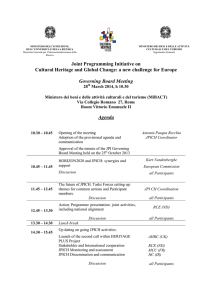

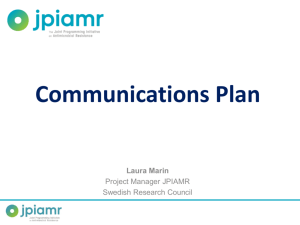
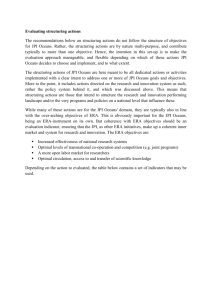
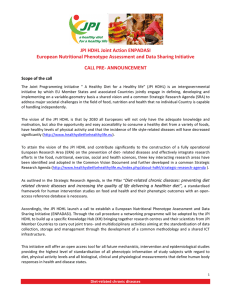
![/7 [Skriv her][Skriv her][Skriv her] JPI Climate Call for Transnational](http://s3.studylib.net/store/data/006810667_1-a9610648c5cad4c880d55593bf3a8cae-300x300.png)
